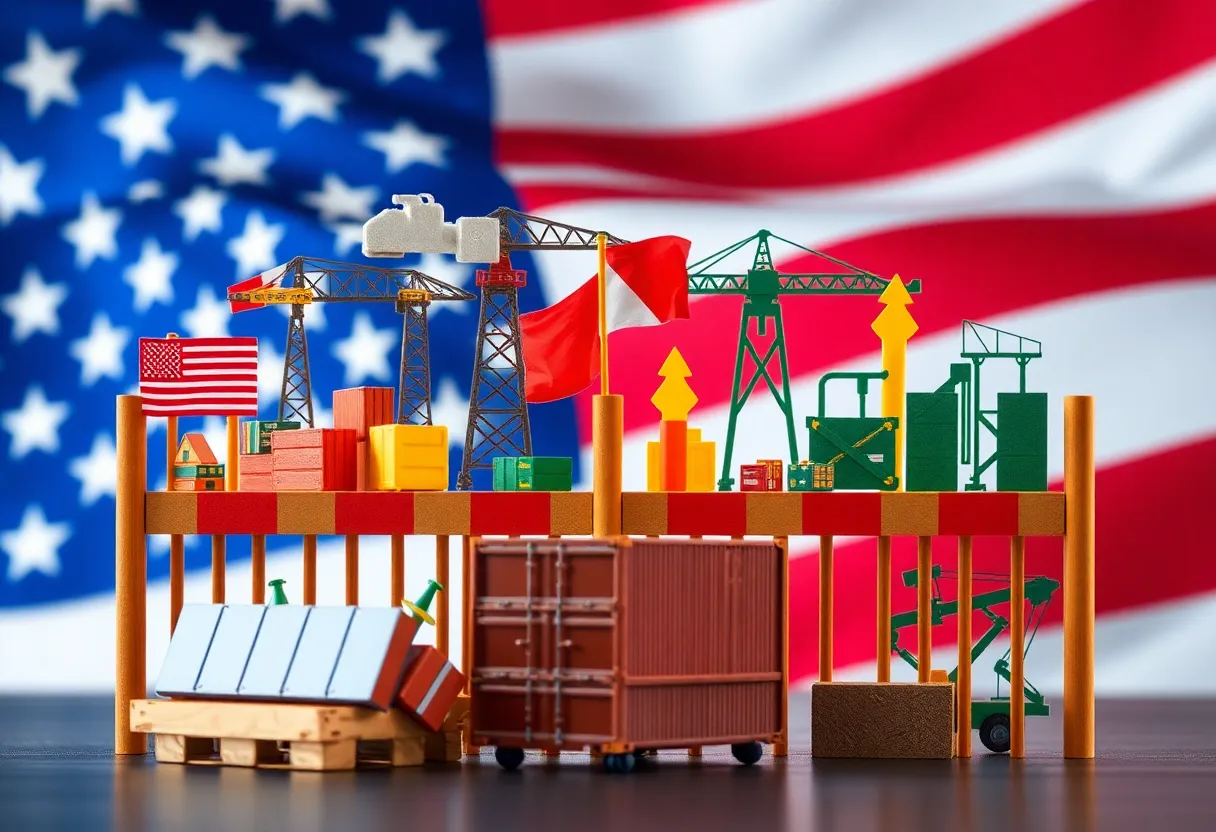News Summary
President Trump has introduced a new tariff strategy aimed at countries he considers to be engaging in unfair trade practices. The plan seeks to strengthen American manufacturing and create jobs by leveling the playing field through reciprocal tariffs. This approach marks a significant departure from traditional trade negotiations, focusing instead on retaliatory measures against nations with high tariffs on U.S. goods. The potential implications for consumers and the economy are significant, prompting discussions about the risk of trade wars and increased costs.
Trump’s New Tariff Strategy: Aimed at “Unfair” Trade Practices
Hold onto your hats, folks! President Trump is shaking things up in the world of international trade with a bold new plan to impose new tariffs on other countries, which he says are engaging in unfair trade practices. His directive to advisers reflects a strategy that aims to bolster American manufacturing and bring jobs back to the United States.
Understanding the Tariff Mission
So what does this mean for us? Well, Trump has asked his team to examine various factors such as trade barriers, taxes, subsidies, and exchange rates that influence trade between the U.S. and other nations. The ultimate goal? To set a level playing field where U.S. products can compete without the hefty penalties that other nations might impose.
A Shift in the Approach
This initiative signifies a noteworthy shift from the traditional U.S. strategy, which usually included negotiations with global trade bodies like the World Trade Organization (WTO). Currently, the U.S. boasts lower average tariff rates compared to many countries, which often puts American goods at a disadvantage.
The Current Landscape of Tariffs
To put things into perspective, here’s a look at how the U.S. stacks up against other nations:
- U.S.: 3%
- China: 8%
- South Korea: 13%
- Mexico: 7%
- India: 17%
- Brazil: 11%
- European Union: 5%
Making Trade Fair
The President is also pushing for reciprocal tariffs, suggesting that if a country charges the U.S. a tax or tariff, the U.S. would respond with identical measures. Highlighting issues with value-added taxes (VAT) employed by other nations, Trump emphasizes how these policies can be more punishing than traditional tariffs.
Highlighting Trade Disparities
One of the key points raised was about India’s significant tariffs on motorcycles, where India charges a massive 100% tariff on U.S. motorcycles compared to just 2.4% that the U.S. imposes on Indian products. This disparity clearly illustrates Trump’s rationale behind the tariff adjustments.
Potential Impact on Consumers
While there may be some short-term pain for consumers due to potential price increases, Trump expresses optimism toward long-term recovery and benefits. However, economists and even some Republican leaders are raising eyebrows, citing fears that these tariffs could lead to heightened consumer costs and possibly ignite a trade war.
What’s At Stake?
According to projections, the proposed tariffs could result in an increase of over $1,200 in annual taxes for the average American household when combined with existing tariffs from countries like China, Mexico, and Canada. This is certainly something to ponder!
Market Reactions
Interestingly enough, after Trump’s announcement, U.S. markets showed a positive response, with many investors feeling hopeful that any significant tariff increases might be more along the lines of negotiation tactics rather than immediate and extensive hikes. Still, uncertainty looms regarding how these potential tariffs could ripple through consumer prices and influence business investments across the board.
Final Thoughts
As the situation continues to develop, it remains to be seen how the proposed tariffs will reshape the landscape of American trade. Will they bring jobs back to the U.S. and create a fairer trading environment, or will they backfire and lead to higher prices for consumers? Only time will tell, so stay tuned!
Deeper Dive: News & Info About This Topic
- The New York Times: Trump’s Tariffs
- Wikipedia: Tariff
- CNN: New US Trump Tariffs
- Google Search: Trump tariffs
- CNBC: Trump Reciprocal Tariffs
- Encyclopedia Britannica: Tariff
- Reuters: India’s Modi and Tariffs
- Google News: Trump tariffs







